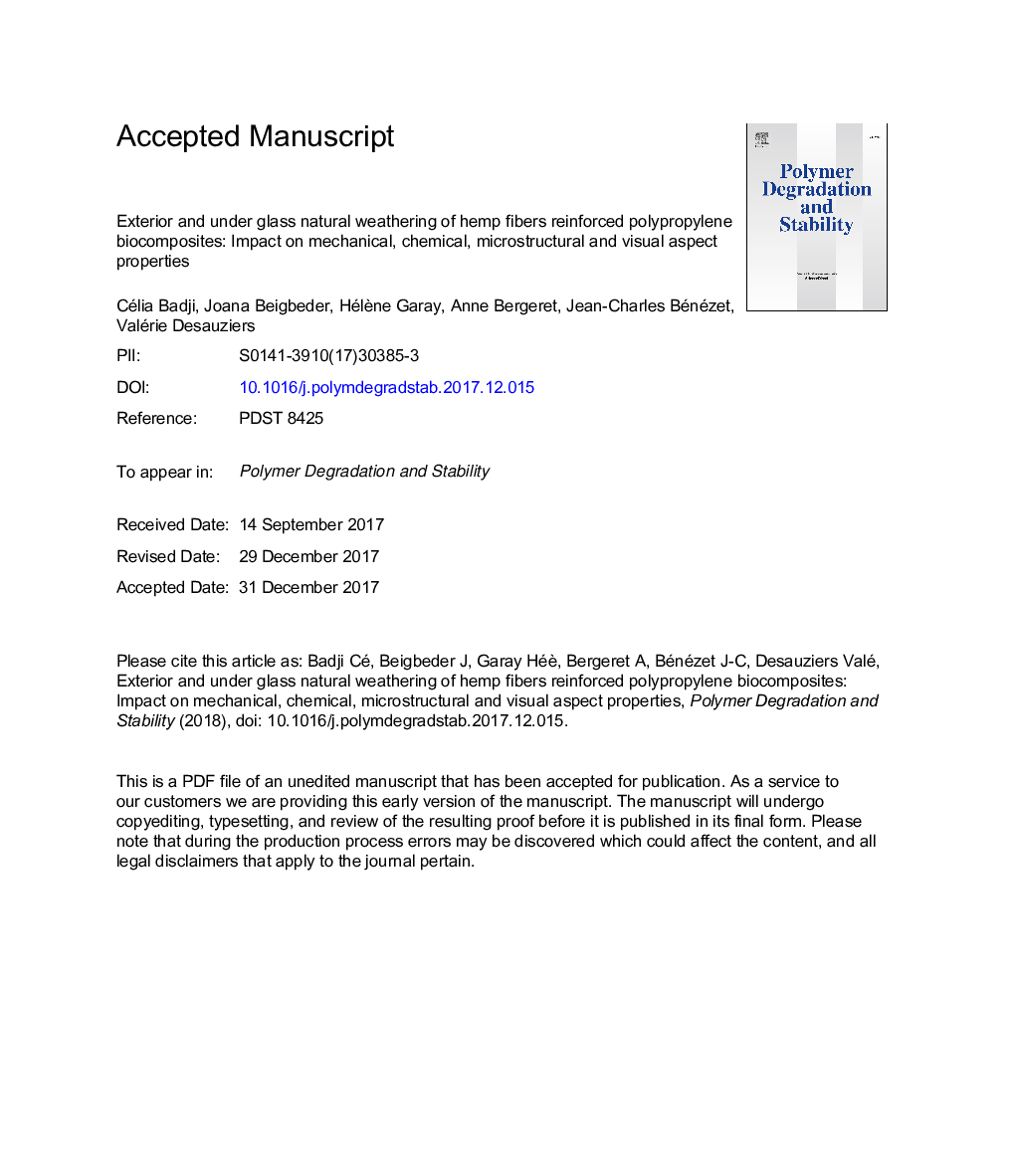| Article ID | Journal | Published Year | Pages | File Type |
|---|---|---|---|---|
| 7824173 | Polymer Degradation and Stability | 2018 | 33 Pages |
Abstract
This work aims to investigate exterior and under glass weathering representing decking and car interior end uses of hemp fibers reinforced polypropylene (PP) biocomposites. For this reason, mechanical flexural tests were firstly performed. Then, the evolution of the PP matrix microstructure was determined through Differential Scanning Calorimetry (DSC). The chemical composition was studied by infrared spectroscopy to understand the photo- and thermo-chemical mechanisms. CIELab system-based colorimetric measurements were carried out to determine the evolution of the chromaticity and lightness. Through a new approach, gloss was obtained by determining the type of reflection of materials as either specular or diffuse, and the surface aspect was characterized by rugosimetry. The influence of the rate of hemp fibers (from 0 to 30â¯wt%) was studied. Results showed that biocomposites were generally more sensitive than neat PP whatever the weathering conditions. However, each type of weathering assessment allowed understanding the contribution of each degradation factor. Indeed, rainfall or UV-A rays induced an increase in the vinyl concentration and the formation of cracks on the surface whereas the carbonyl functional groups rate was not influenced by the type of weathering. The high temperatures under windshield glass favored a chemicrystallization and biocomposites yellowing at the first period of exposition whereas outdoor exposure induced red color loss.
Related Topics
Physical Sciences and Engineering
Chemistry
Organic Chemistry
Authors
Célia Badji, Joana Beigbeder, Hélène Garay, Anne Bergeret, Jean-Charles Bénézet, Valérie Desauziers,
